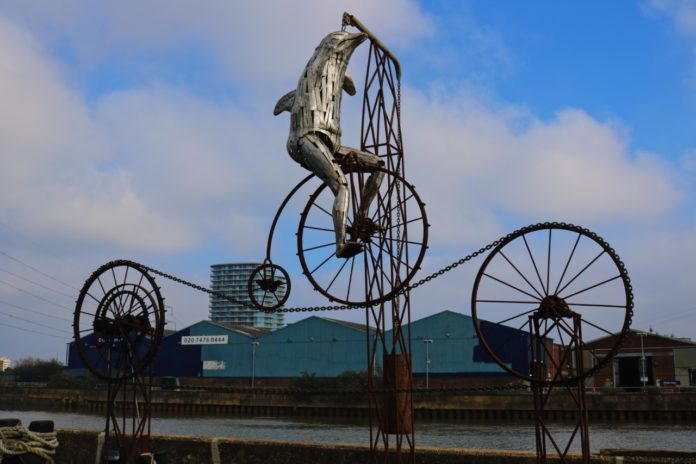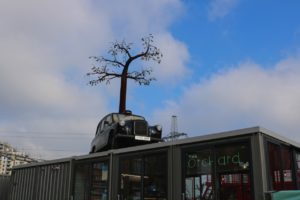 Cab Tree sculpture by Andrew Baldwin
Cab Tree sculpture by Andrew Baldwin
Trinity Buoy Wharf is a centre for arts and cultural activities on the site of a lighthouse where Bow Creek opens out onto the Thames.
Once part of the working docklands, this destination is now a flourishing cultural hub that combines art, culture, history and science. Home to London’s only lighthouse, the wharf also houses one of the city’s smallest museums (it’s basically a shed) and a musical installation designed to play for 1,000 years.
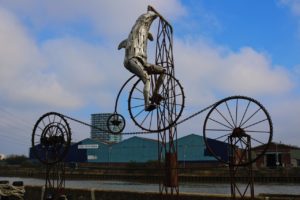 Penny Farthing sculpture by Andrew Baldwin
Penny Farthing sculpture by Andrew Baldwin
The old brick buildings were built by Trinity House, the charity that helps keep Britain’s coastal water safe through – amongst other things – the design and build of navigational equipment, buoys, lighthouses and lightships etc. Sensitive regeneration means that Trinity Buoy Wharf has kept its character whilst offering modern amenities. These include studio and event space; a pier; two schools; rehearsal rooms; the Orchard Cafe; a Fat Boy’s Diner; and 4000 sq. ft of sustainable Container City buildings.
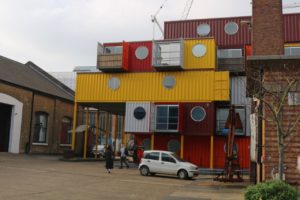 Container City, Trinity Buoy Wharf
Container City, Trinity Buoy Wharf
One of the highlights – London’s only lighthouse – is now inactive. But its lamp room doubles as an installation devoted to the Longplayer project, a1,000-year-long musical composition based on with Tibetan singing bowls. Conceived by British musician Jem Finer of the band The Pogues, the Liongplayer score is designed to be performed continuously and without repetition for 365,243 days – slightly more than a millennium – and if it succeeds (978 years to go), it will become the longest-lasting piece of music in history.
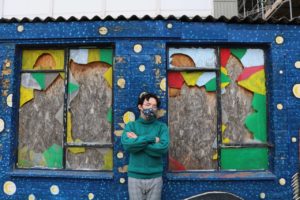 Allazhar Duisenbek, one of this piece’s authors
Allazhar Duisenbek, one of this piece’s authors

